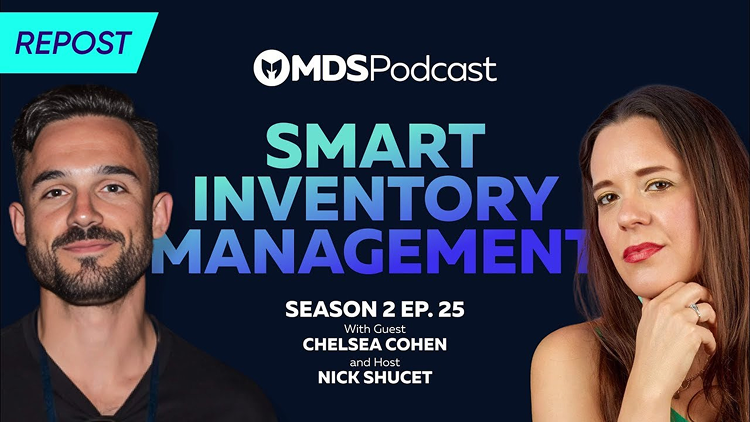Why Amazon Inventory Management Is Critical to Your Success
Inventory is the lifeblood of any Amazon business. Without a strong inventory management system, you risk stockouts, overstock, and unnecessary storage fees. But managing inventory effectively is about more than just keeping products in stock—it’s about optimizing supply chain efficiency, forecasting demand accurately, and ensuring cash flow remains positive.
In this guide, we’ll break down the essential strategies for inventory success, plus how the right Amazon seller tools can help you streamline your operations.
Common Inventory Challenges for Amazon Sellers
Many Amazon sellers struggle with:
- Stockouts and lost sales – Running out of inventory means lost revenue and a drop in rankings.
- Overstock and high storage fees – Holding too much inventory ties up cash flow and leads to expensive Amazon FBA fees.
- Unreliable forecasting – Seasonal trends, market fluctuations, and shifting consumer demand make it hard to predict stock needs accurately.
- Supply chain inefficiencies – Poor supplier communication and shipping delays disrupt stock replenishment.

How to Improve Your Amazon Inventory Management
1. Use Inventory Forecasting to Prevent Stockouts
Effective inventory forecasting helps you maintain a balanced stock level. By analyzing sales history, seasonality, and current demand trends, you can accurately predict how much inventory you need.
2. Optimize Your Reorder Process
Your reorder process should be streamlined and based on data-driven insights. Set clear reorder points and use automated purchase order (PO) systems to ensure seamless stock replenishment.
Best Practices:
- Establish reorder points based on sales velocity and lead times.
- Work closely with suppliers to prevent delays.
- Use bulk ordering strategies to minimize shipping costs.
3. Leverage Supply Chain Optimization
Your supply chain plays a crucial role in inventory management. Optimizing supplier relationships and logistics ensures smooth stock replenishment and prevents disruptions.
Tips for Supply Chain Success:
- Build relationships with multiple suppliers to reduce risk.
- Monitor lead times and adjust reorder schedules accordingly.
- Consider third-party logistics (3PL) services for improved flexibility.
4. Monitor Amazon’s Inventory Performance Index (IPI)
Amazon’s IPI score determines your FBA storage limits and affects your ability to store inventory. Maintaining a high IPI score ensures you can scale without restrictions.
How to Boost Your IPI Score:
- Reduce excess inventory and remove slow-moving stock.
- Improve sell-through rates by running strategic promotions.
- Maintain a high in-stock rate to meet demand.
5. Implement an Inventory Management System
Manually tracking inventory is inefficient and error-prone. A robust inventory management system automates stock tracking, forecasting, and order management.
Take control of your inventory with SoStocked. Our forecasting prevents stockouts and costly storage fees by predicting demand, automating reorder points, and preventing fees. See your recommended actions before it’s too late.
The Financial Impact of Poor Amazon Inventory Management
Mismanaging inventory doesn’t just hurt sales—it directly impacts your bottom line.
The Cash Flow Crisis
Cash flow problems are one of the biggest reasons Amazon businesses fail. When too much capital is tied up in unsold inventory, businesses struggle to cover operational costs and reinvest in growth. Research by Intuit shows that 44% of growing small businesses regularly experience cash flow problems, with inventory mismanagement being a primary contributor.
The Seasonal Miscalculation
Consider an Amazon seller who invested $50,000 in holiday decorations for Q4, anticipating a 200% increase in sales based on previous years. Without proper demand forecasting, they found themselves with $30,000 in unsold inventory by January. This led to:
- $4,500 in storage fees over six months
- $30,000 in tied-up capital that couldn’t be used for Valentine’s Day inventory
- A 15% drop in Q1 revenue due to missed opportunity costs
- Interest payments on a $20,000 loan needed to cover basic operations
Navigate Amazon’s complex fee structure with our latest Fee Stack white paper. Our third edition provides a complete breakdown of 2025 fee updates and actionable strategies to help you protect your margins. Get your free guide now.
Key Takeaways for Healthy Cash Flow
1. Improve Inventory Turnover Rates to Keep Cash Flowing
Companies with excellent inventory management achieve 10-15 inventory turns annually, significantly outperforming the industry average of just 3-4 turns.
What many business owners don’t realize is that each single-point improvement in inventory turns can release 10-15% of capital back into the business, providing crucial funds for expansion, marketing, or developing new product lines. This increased financial flexibility allows businesses to respond more quickly to market opportunities and competitive challenges.
2. Use Data-Driven Demand Planning to Minimize Excess Stock
Implementing data-driven demand planning strategies dramatically reduces the financial burden of excess inventory.
Businesses that adopt advanced forecasting techniques consistently reduce inventory levels by 20-30% while simultaneously maintaining or improving customer service levels.
A study found that AI also enhances inventory management by predicting demand spikes and ensuring ideal stock levels. For instance, a case study on Amazon showed a 15% decrease in stockouts through AI-powered demand forecasting. This more precise approach to inventory management enables businesses to make confident purchasing decisions based on actual customer demand patterns rather than gut feelings or outdated ordering practices.
3. Avoid Long-Term Storage Fees by Optimizing FBA Inventory Levels
For Amazon sellers, optimizing FBA inventory levels is critical to profitability. Amazon’s long-term storage fees can reach a substantial $6.90 per cubic foot for items stored over 365 days, rapidly eroding profit margins on slow-moving products.
Establishing a discipline of quarterly inventory reviews allows sellers to identify slow-moving products before they trigger higher fee thresholds, giving them time to implement markdown strategies, bundle offers, or removal plans. This proactive approach transforms inventory management from a reactive expense into a strategic advantage.
Refining Your Amazon Inventory Management Approach
A well-optimized inventory management strategy is essential for Amazon success. By leveraging forecasting tools, optimizing supply chain processes, and maintaining healthy stock levels, you can prevent common pitfalls and drive long-term profitability.
For sellers looking to take their Amazon inventory management to the next level, SoStocked offers an intuitive, automated solution that eliminates guesswork and improves efficiency.
Ready to optimize your Amazon inventory? Try SoStocked today and streamline your operations for maximum profitability!





